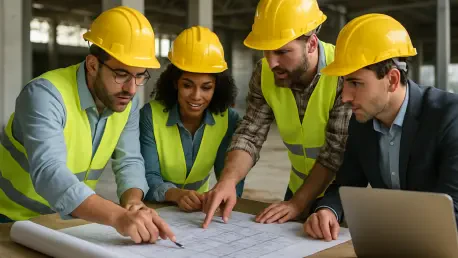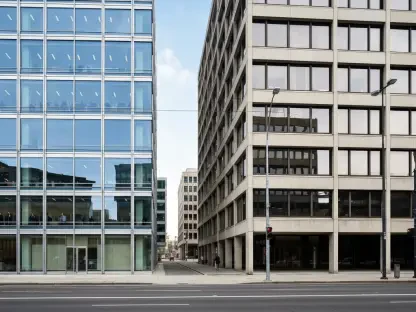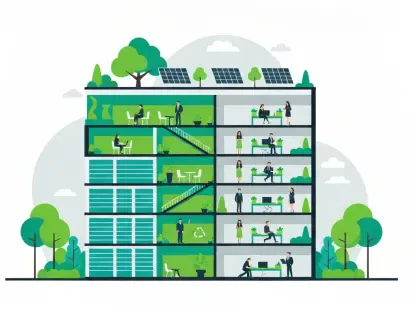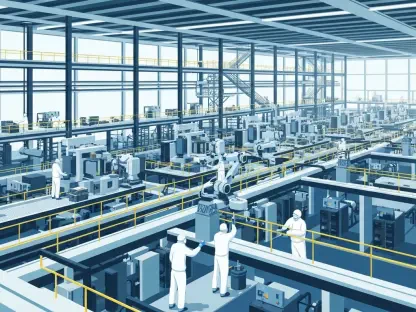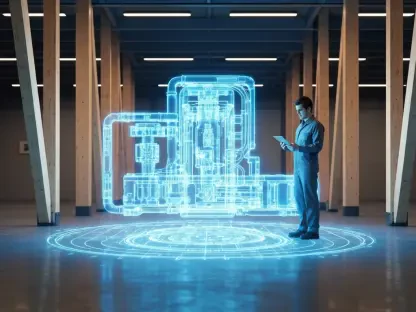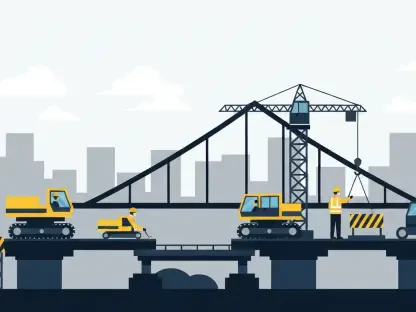Imagine a construction project where delays are slashed, budgets are safeguarded, and the final structure stands resilient against environmental challenges—all because the team worked as a single unit from day one. This is the promise of the design-build model, a collaborative approach where designers, engineers, and builders operate under a single contract from the project’s inception. Unlike fragmented traditional methods, this integrated framework is gaining traction as a solution to modern construction hurdles, such as accelerated timelines, cost overruns, and the demand for durable infrastructure.
The significance of adopting innovative methods cannot be overstated in an era where construction must adapt to tighter schedules and unpredictable supply chains. Design-build offers a pathway to address these pressures by fostering seamless coordination among stakeholders. This approach ensures that every phase, from concept to completion, aligns with overarching project goals, minimizing errors and maximizing efficiency.
This discussion explores critical aspects of design-build, including its advantages over conventional methods, specific benefits in action, practical applications across diverse scenarios, and its implications for the future of construction. By delving into these areas, the aim is to illustrate how this model is not just an alternative but a necessary evolution for building stronger, smarter projects.
The Case for Design-Build Over Traditional Methods
Traditional construction often relies on the design-bid-build model, where separate contracts for design and construction lead to fragmented communication. This separation frequently results in delays, misalignments between plans and execution, and disputes over accountability when issues arise. Such inefficiencies can derail timelines and inflate costs, especially in complex projects requiring precise coordination.
In contrast, design-build emerges as a vital solution to meet today’s demanding construction landscape. With tighter schedules and volatile material availability, the need for a unified approach becomes evident. By integrating all parties under one contract, this method eliminates silos, ensuring that challenges are addressed proactively rather than reactively, which is often the case in sequential handoff systems.
Key benefits of design-build include enhanced speed through streamlined processes, cost certainty via early collaboration, improved quality from shared responsibility, resilience against external disruptions, and positive community impact through localized engagement. These advantages position design-build as a superior choice for projects where time, budget, and durability are non-negotiable priorities, paving the way for more robust outcomes.
Key Advantages of Design-Build in Action
Understanding the theoretical benefits of design-build is only part of the equation; seeing these strengths applied in real-world settings reveals their true potential. The following sections break down core advantages into actionable insights, demonstrating how this model transforms challenges into opportunities. Each aspect highlights a unique facet of why this approach is redefining construction standards.
Practical examples further illustrate how design-build translates into tangible success. From accelerated timelines to resilient structures, these insights provide a roadmap for implementation. The focus here is on dissecting specific strengths and showcasing their impact on project outcomes across varied environments.
Speed and Cost Efficiency Through Early Collaboration
One of the standout features of design-build is its ability to streamline communication by involving all stakeholders from the outset. This early integration eliminates the waiting periods inherent in traditional models, where design completion precedes contractor involvement. Instead, real-time collaboration ensures that potential issues are flagged and resolved before they escalate into costly delays.
This method also embeds continuous value engineering throughout the project lifecycle. Decisions on materials, systems, and construction techniques are made collectively, protecting budgets while maintaining timelines. The result is a process where cost overruns are minimized, and project delivery is expedited without sacrificing quality, a critical factor in high-stakes developments.
Case Study: Accelerated Project Delivery
Consider a commercial development in Southwest Florida, where design-build shaved significant time off the schedule. By enabling early material procurement and phased construction, the team bypassed typical bottlenecks, completing key milestones months ahead of projections. This efficiency not only saved resources but also allowed the owner to realize returns sooner than anticipated.
Resilience in Design and Delivery for Challenging Environments
Construction in areas prone to natural disruptions demands a proactive stance, and design-build excels in this arena. Teams can plan around environmental risks by phasing work to avoid peak weather challenges and ordering long-lead items well in advance. Such foresight prevents costly interruptions and keeps projects on track despite external variables.
Beyond logistical resilience, this model enhances the physical durability of structures. With designers and builders aligned from the start, solutions for withstanding harsh conditions are baked into the planning phase. This dual focus on delivery robustness and structural strength ensures that projects endure both during construction and over their lifespan.
Example: Weather-Resilient Construction
In a storm-prone coastal region, a design-build team successfully navigated seasonal challenges on a critical infrastructure project. Through strategic scheduling and early coordination on weather-resistant materials, the project avoided delays that often plague traditional approaches. This adaptability underscores how integrated planning can turn vulnerabilities into manageable factors.
Quality and Accountability Through Unified Teams
A unified team structure under design-build fosters a culture of problem-solving rather than blame-shifting. When designers and builders share responsibility, the focus shifts to seamless integration of complex systems, ensuring that every component functions as intended. This collaborative ethos reduces errors and enhances the overall standard of the finished product.
The reduction in rework is another significant outcome of this shared accountability. Missteps that might go unnoticed in fragmented models are caught early through constant dialogue among team members. As a result, projects benefit from higher precision, fewer revisions, and a commitment to excellence that permeates every stage of development.
Real-World Impact: Technology Integration Success
In a recent industrial facility project, design-build ensured flawless incorporation of advanced automation systems. By aligning engineers and builders from the initial concept, the team addressed compatibility issues before installation, avoiding disruptions. This synergy highlights how a cohesive approach can tackle sophisticated requirements with confidence.
Community Engagement and Local Expertise
Incorporating local subcontractors and suppliers early in the process brings invaluable regional knowledge to design-build projects. Their insights into permitting nuances, utility coordination, and site-specific conditions enhance project reliability. This localized input often prevents unforeseen hurdles that could stall progress under less inclusive models.
Beyond operational benefits, this approach amplifies economic impact within communities. By prioritizing nearby talent and resources, design-build creates jobs and strengthens regional ties, particularly in public initiatives. The ripple effect transforms construction into a catalyst for broader social and economic growth, fostering a sense of shared ownership.
Community Project Highlight
A public infrastructure endeavor exemplified this principle by maximizing local involvement through design-build. Engaging area contractors and vendors not only streamlined compliance with regional regulations but also generated employment opportunities. The project became a source of community pride, reinforcing the value of grounding construction in local context.
Looking Ahead: Why Design-Build Is the Way Forward
Design-build stands as a transformative solution that harmonizes innovation with practical execution in the construction industry. It addresses modern demands by delivering speed, cost efficiency, resilience, and quality through a collaborative framework. This method proves indispensable for owners prioritizing long-term value, projects in high-risk zones, or those with intricate technical needs.
For those considering adoption, selecting experienced teams is paramount to success. Establishing clear communication channels from the outset ensures alignment, while defining project goals within the design-build structure maximizes its benefits. These considerations lay the groundwork for leveraging this approach effectively across diverse initiatives.
Reflecting on past implementations, design-build consistently demonstrated its capacity to overcome traditional limitations. Moving forward, stakeholders should explore partnerships with firms adept in this model to navigate future complexities. Embracing this integrated strategy promises not just stronger buildings but also a more adaptable industry ready to tackle tomorrow’s challenges with confidence.
